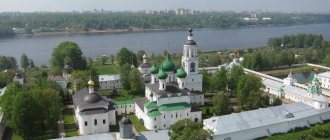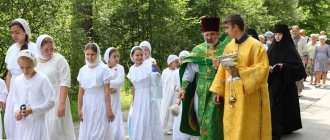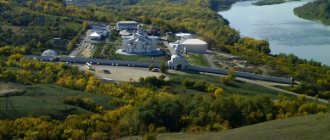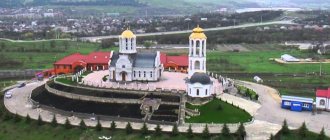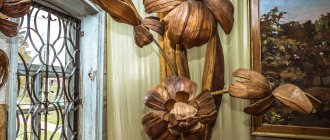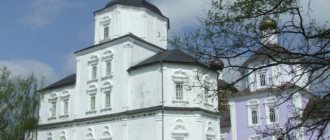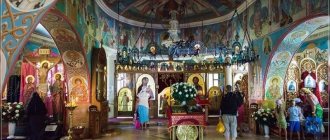Mir
Russia Yaroslavl Region Yaroslavl Tolga Convent Map loading in progress...
{"format":"leaflet","minzoom":false,"maxzoom":false,"limit":50,"offset":0,"link":"all","sort":[""], "order":[],"headers":"show","mainlabel":"","intro":"","outro":"","searchlabel":"\u2026 \u0441\u043b\u0435\ u0434\u0443\u044e\u0449\u0438\u0435 \u0440\u0435\u0437\u0443\u043b\u044c\u0442\u0430\u0442\u044b","default":"","import-annotation":false,"width ":"auto","height":"350px","centre":{"text":"","title":"""link":"""lat":57.70078500000000332192939822562038898468017578125,"lon": 39.82714899999999857982402318157255649566650390625,"icon":""},"title":"","label":"","icon":"","lines":[],"polygons":[],"circles":[ ],"rectangles":[],"copycoords":false,"static":false,"zoom":8,"defzoom":14,"layers":["OpenStreetMap"],"image layers":[] ,"overlays":[],"resizable":false,"fullscreen":true,"scrollwheelzoom":true,"cluster":false,"clustermaxzoom":9,"clusterzoomonclick":true,"clustermaxradius":80, "clusterspiderfy":true,"geojson":"","clicktarget":"","showtitle":true,"hidenamespace":false,"template":"","userparam":"","activeicon": "","pagelabel":false,"ajaxcoordproperty":"","ajaxquery":"","locations":[{"text":"\u003Cb\u003E\u003Ca href=\"/palomnik/%D0% A2%D0%BE%D0%BB%D0%B3%D1%81%D0%BA%D0%B8%D0%B9_%D0%B6%D0%B5%D0%BD%D1%81%D0%BA% D0%B8%D0%B9_%D0%BC%D0%BE%D0%BD%D0%B0%D1%81%D1%82%D1%8B%D1%80%D1%8C\» title=\»\ u0422\u043e\u043b\u0433\u0441\u043a\u0438\u0439 \u0436\u0435\u043d\u0441\u043a\u0438\u0439 \u043c\u043e\u043d\u0430\u0441\u0 442\u044b\u0440\u044c\»\ u003E\u0422\u043e\u043b\u0433\u0441\u043a\u0438\u0439 \u0436\u0435\u043d\u0441\u043a\u0438\u0439 \u043c\u043e\u043d\u0430\u0 441\u0442\u044b\u0440\u044c\ u003C/a\u003E\u003C/b\u003E\u003Chr /\u003E\u003Ca href=\»/palomnik/%D0%A1%D0%B2%D0%BE%D0%B9%D1%81%D1%82% D0%B2%D0%BE:%D0%90%D0%BD%D0%BD%D0%BE%D1%82%D0%B0%D1%86%D0%B8%D1%8F\» title=\» \u0421\u0432\u043e\u0439\u0441\u0442\u0432\u043e:\u0410\u043d\u043d\u043e\u0442\u0430\u0446\u0438\u044f\»\u003E\u0410\u043d \u043d\u043e\u0442\ u0430\u0446\u0438\u044f\u003C/a\u003E: »'\u0421\u0432\u044f\u0442\u043e-\u0412\u0432\u0435\u0434\u0435\u043d\u0441\u043a\u04 38\u0439\u0422\ u043e\u043b\u0433\u0441\u043a\u0438\u0439"' \u043c\u043e\u043d\u0430\u0441\u0442\u044b\u0440\u044c \u043e\u0441\u043d\u043e\ u0432\u0430\u043d\u0432 XIV \u0432\u0435\u043a\u0435, \u0438\u0437\u0432\u0435\u0441\u0442\u0435\u043d \u0441\u0432\u043e\u0435\u0439 \u0441\u0432\u044 f\u0442\u044b\u043d\u0435\ u0439 \u2014 \u0422\u043e\u043b\u0433\u0441\u043a\u043e\u0439 \u0438\u043a\u043e\u043d\u043e\u0439 \u0411\u043e\u0436\u0438\ u0435\u0439\u041c\u0430\u0442\ u0435\u0440\u0438","title":"\u0422\u043e\u043b\u0433\u0441\u043a\u0438\u0439 \u0436\u0435\u043d\u0441\u043a\u0438\u0439 \u043c\u0 43e\u043d\u0430 \u0441\u0442\u044b\u0440\u044c","link":"","lat":57.70078500000000332192939822562038898468017578125,"lon":39.827148999999998579824023 18157255649566650390625,"icon":""}],"imageLayers":[]}
57.700785; 39.827149
Russia, Yaroslavl, Tolga village
Yaroslavl, Yaroslavl region
Russia
Telephone.:
8 (4852) 38-00-55
Holy Vvedensky Tolgsky
The monastery was founded in the 14th century and is famous for its shrine - the Tolga Icon of the Mother of God. Located in Yaroslavl on the left bank of the Volga. Belongs to the Yaroslavl diocese of the Russian Orthodox Church.
History[[edit]h2>
The Holy Vvedensky Tolgsky Monastery was founded in the 14th century by Bishop Prokhor of Rostov under the Yaroslavl Holy Prince David Feodorovich.
Bishop Prokhor (in schema Trifon), returning along the Volga to Yaroslavl from the Belozersk country, on August 7, 1314, together with the priests who were with him, stopped to spend the night on the right bank of the Volga, 8 versts from Yaroslavl. At midnight, the saint, awakening from sleep, saw on the opposite bank an inexplicably shining pillar of fire and a bridge across the river to it.
On the morning of August 8, an icon of the Most Holy Theotokos was found at this place. At the site of the appearance of the miraculous image, the saint himself “began to clear the forest with his own hands and cleanse the place and prepare wood for the church mala...”. By noon, a church was built here, and by evening, Bishop Prokhor consecrated it in the name of the Entry of the Most Holy Theotokos into the temple. An image of the Mother of God was brought into the church, named “Tolga” after the small Tolga river, which flowed in that place and flowed into the Volga. At the same time, the celebration of the appearance of the Mother of God was established - on the eighth day of August. On the same day, the archpastor blessed the monastery to be attached to the church and appointed its abbot-abbot.
On September 16, 1392, in the Tolga monastery, the miracle of the flow of the celibate myrrh from the icon of the Mother of God was revealed. Many sick people who were present in the temple at that time and were anointed with myrrh received healing.
At the beginning of the 15th century there was a big fire in the monastery. The cells and the fence burned down, and the church was instantly engulfed in flames. The inhabitants were unable to save anything from the church utensils. But when the fire ended, the holy icon was found outside the monastery, in the forest, completely unharmed and shining with light. The monastery did not cease to exist, which happened after fires with many monasteries of that time.
In 1553, Tsar Ivan Vasilyevich the Terrible visited the monastery. The reason for the visit was the tsar’s pilgrimage to the Kirillo-Belozersky Monastery on the occasion of an illness in his legs. On the way back, the king stopped at Tolga. He prayed a lot with tears before the miraculous icon of the Most Holy Theotokos. His legs became stronger and he was able to get up from the chair in which he was carried. The Tsar thanked God and His Most Pure Mother, presented the abbot and brethren with generous alms and ordered the construction of a stone church in the monastery, which was subsequently erected under the abbot Theodosius.
During the Time of Troubles, the Tolga monastery was completely destroyed, but the miraculous icon survived. The year 1612 is noted in the annals of the monastery with the oldest known religious procession with the Tolga Icon of the Mother of God to Yaroslavl, which was then designated as a gathering point for the people's militias gathering to save Moscow and the Russian state. Due to the extraordinary crowd of people in the city, a pestilence began, thousands of people died. Prince Dmitry Pozharsky, the clergy and city authorities decided to turn to the ever-present Intercessor of the Russian Land for help and sent for Her miraculous icon to the Tolga Monastery. The miraculous icon was brought and after the All-Grad religious procession with it, the disease subsided.
Terrible natural disasters - famine, pestilence, great fires - visited Yaroslavl more than once. After the amazing, gracious help received in the grave troubles that befell Yaroslavl in 1654-1657, the city residents petitioned for the establishment of an annual religious procession with the miraculous Tolga Icon to Yaroslavl.
The rapid flourishing of the monastery in the last quarter of the 17th century is associated with the name of Abbot Gordian, under whom the construction of the holy monastery gates was completed and the majestic Vvedensky Cathedral Church was erected on the site of the ancient one, which was small in capacity and already dilapidated. Hegumen Gordian died in 1700 and was buried at the northwestern wall of the altar of the cathedral monastery church he built.
Under the cathedral church there is also a tomb of honorary citizens of the city, who during their lifetime made donations to the holy monastery, as well as representatives of the famous ancient boyar families: the Golitsyns, Vyazemskys, Troekurovs, Melgunovs and others.
The monastery is surrounded by a stone fence with nine towers. The exact time of its construction is unknown, presumably the end of the 17th century. The construction of another church on the territory of the monastery - in honor of the Image of the Savior Not Made by Hands - dates back to the same time or to the beginning of the 18th century. This church is distinguished by its unique dome. A two-story building was attached to it, in which, by order of the secular authorities, since 1757, military chiefs, non-commissioned officers and privates who were unable to serve lived for food. Since 1793, the building has been turned into a monastery hospital, which is why the temple was called a hospital one. In 1806, classes of a theological school were located in this building, then a seminary, then a district-parochial school.
In the XVIII - beginning. XX century. Members of the royal family visited the monastery more than once. In 1763, Empress Catherine the Great was here; in 1913, Emperor Nicholas II visited the Tolga Monastery along with his family.
In 1862, Saint Ignatius (Brianchaninov) arrived here.
In 1914, the monastery celebrated its 600th anniversary. The anniversary celebrations were led by Archbishop Agafangel of Yaroslavl and Rostov (Preobrazhensky, new martyr, †1928).
In 1928 the monastery was closed. In 1932, the cells were transferred for the resettlement of townspeople.
The revival of the monastery began in 1987.
The Soviet period in the life of the monastery
The Soviet government declared the priests their enemies: in 1918, a novice of the Tolgsky monastery and two hieromonks were shot. In 1928, the monastery was closed , the bells were thrown from the bell tower, the shrines were sent to a museum, and the monks were driven away. Hieromonk Gregory, who tried to defend the monastery, was exiled to Siberia.
In the early 30s, a concrete pool with an area of 1000 sq.m was built in the cathedral to test a model of the Yaroslavl dam for the future Srednevolzhskaya hydroelectric station. Fortunately, the project was not approved; the soil in the Tolga area was not suitable for construction.
In 1935, a children's colony of the NKVD . The farm yard and meadow on the banks of the Tolga were surrounded by a concrete fence and rows of barbed wire. Here they set up a kennel and stables, a warehouse and workshops, a rest room for security, a club and a garage.
The unoccupied area of the monastery was turned into housing for the townspeople. Residents rebuilt uncomfortable rooms in their own way, cutting new doors and windows.
In 1947, the Tolga Monastery was included in the list of architectural monuments protected by the state. In 1987, when the monastery was transferred to the church, the colony was disbanded.
Current state[[edit]h2>
On May 26, 1988, the reviving Tolga monastery celebrated a joyful event - the discovery and transfer of the venerable relics of St. Ignatius (Brianchaninov), which rest in the monastery to this day.
On July 29, 1988, the festive Divine Liturgy was celebrated for the first time by the bishop in the newly consecrated Spasskaya Church.
In September 1988, the Tolga Monastery was handed over to believers. By the decision of His Holiness Patriarch Pimen and the Holy Synod, the first in many decades and at that time the only women’s monastery in Russia was established on the territory of the monastery (after 1917, all Orthodox women’s monasteries were gradually closed on the territory of the RSFSR).
Anniversary
On August 20-21, 2014, the 700th anniversary of the Tolga Monastery was celebrated. Thousands of pilgrims from all over the country arrived for the celebration, which was led by Patriarch of Russia and All Rus' Kirill. The celebration began with a general religious procession. On the feast of the Tolga Icon of the Mother of God, His Holiness served the Divine Liturgy in the open air on the cathedral square in front of the Vvedensky Church. The service was attended by many high-ranking officials of the Russian Federation, Abbess Varvara and her sisters, abbesses of many convents, representatives of the Athos Monastery and members of the Board of Trustees of the Tolga Monastery. The choir of the Moscow Sretensky Monastery and the choir of the Tolga Monastery under the direction of the nun Irinarcha sang.
Architecture[[edit]h2>
The following churches operate on the territory of the monastery:
- Cathedral in honor of the Entry into the Temple of the Blessed Virgin Mary (1681-1683), summer. The throne was consecrated by Archbishop Platon of Yaroslavl and Rostov on August 20, 1992. The southern aisle of the cathedral - in honor of the Yaroslavl miracle workers, the noble princes Theodore of Smolensk and his children David and Constantine - was consecrated by Archbishop Kirill of Yaroslavl and Rostov on September 25, 2009.
- Holy Cross Church (1625), winter. The thrones of the temple and the northern limit in honor of the Tolga Icon of the Mother of God were consecrated on September 26, 1999 by Archbishop Micah of Yaroslavl and Rostov.
- Temple in honor of the Holy Great Martyr Barbara. Built in 2006 in the eastern part of the basement of the Holy Cross Church. The throne was consecrated by Archbishop Kirill of Yaroslavl and Rostov on December 16, 2006.
- Spassky Church, in honor of the Image of the Savior Not Made by Hands (beginning of the 18th century). The throne was consecrated on July 29, 1988 by Archbishop Platon of Yaroslavl and Rostov.
- St. Nicholas (gate) temple (1672). The throne was consecrated on May 16, 1997 by Archbishop Micah of Yaroslavl and Rostov.
Architectural monuments on the territory
The oldest building on the territory of the Tolga monastery is the Exaltation of the Cross Cathedral along with the refectory (1625). Church services are regularly celebrated here in the fall and winter.
The pearl of the architectural ensemble is the Vvedensky Church of the late 17th century. Its walls are richly painted with frescoes that have been preserved since 1690. Services in this cathedral are held only in the summer.
A little later, the Spasskaya Church was built (early 18th century). It was founded in the name of the Image of the Savior Not Made by Hands, donated to the monastery by Ivan the Terrible. Also on the territory of the Lavra, another ancient building has been preserved - St. Nicholas Cathedral (1672) along with a chapel erected two centuries later in honor of the dead monks.
No less famous is the cedar grove located on the southeast side. The oldest tree that has survived to this day was planted in 1810. Older specimens were lost during numerous fires and wars. There is a small chapel in the forest, and the cedar forest itself is surrounded by a high stone fence to the north.
Visitors are allowed into the territory of the cedar grove only once a year - on August 21, when they celebrate the discovery of the miraculous image of the Virgin Mary.
Holy Gate with the Church of St. Nicholas the Wonderworker
Vvedensky Cathedral
South Gate Tower
Chapel
Church of the Exaltation of the Cross
Church of the Savior Not Made by Hands
Shrines[[edit]h2>- piece of the Robe of the Lord
- a piece of the Nail with which our Lord Jesus Christ was crucified
- piece of the Robe of the Blessed Virgin Mary
- miraculous icon of the Mother of God “Tolgskaya”
- piece of the Shroud of Turin
- piece of the tunic of John the Baptist
- Icon of the Mother of God “The Sign”
- relics of Saint Ignatius (Brianchaninov)
- particles of the relics of the 12 apostles
- particle of the relics of St. Nicholas the Wonderworker
- a particle of the relics of St. Spyridon of Trimifuntsky and his shoe
- particles of the relics of the infant martyrs of Bethlehem
- particle of the relics of Gregory the Theologian
- particle of the relics of St. Sergius of Radonezh
- particle of the relics of the Great Martyr Barbara
- particles of the relics of the unmercenaries Cosmas and Damian
- particle of the relics of the martyr Tsar Stefan Dečanski
- particles of the relics of the noble princes Theodore, David and Constantine, Yaroslavl Wonderworkers
- particles of the relics of the Kiev-Pechersk saints
- icon with a particle of the relics of St. Theodosius of Chernigov
- icon with a particle of the relics of St. Pitirim of Tambov
- icon with a particle of the relics of St. Luke of Voino-Yasenetsky
- icon with particles of the relics of the martyr John the Warrior and the great martyr Nikita
- icon with a particle of the relics of the martyr Natalia
- icon with a particle of the relics of the martyr Hilarion (Trinity)
- icon with a particle of the relics of St. Lawrence of Chernigov
- icon with a particle of the relics of St. Barnabas of Gethsemane
- icon with a particle of the relics of the blessed Matrona of Moscow
- icon with a particle of the relics of the blessed prince Demetrius of Uglich
Patronal holidays[[edit]h2>
Presentation of the Blessed Virgin Mary into the Temple
— December 4
- Tolga Icon of the Mother of God (August 21)
- Exaltation of the Holy Cross (September 27)
- St. St. Nicholas the Wonderworker (May 22, August 11, December 19)
- St. book Theodore of Smolensk and his children David and Constantine (March 18 and October 2)
- Savior Not Made by Hands (August 29).
Story
A holy monastery where a person can open his heart to the Lord in the hope of receiving long-awaited support and help.
The Women's Monastery was founded in Yaroslavl in 1314 on the site where the miraculous icon of the Tolga Mother of God appeared to people, which blessed the entire Yaroslavl land.
Despite various historical events, which were often tragic, the monastery was able to rise from the ruins and today still attracts a huge number of mourners. And they receive help and God's grace through their faith.
How to get there[[edit]h2>
Directions:
How to get to the Holy Vvedensky Tolga Monastery in Yaroslavl:
from the “Red Square” stop to the Tolgsky Monastery on bus route No. 34; from the Yaroslavl railway station by minibus No. 93 G to the stop “Zheleznodorozhnaya Street, Tolgobol Village”. Then walk to the monastery about 2 km; from the Yaroslavl railway station by trolleybus No. 1 to the "Red Square" stop, go to another stop on bus routes No. 21, No. 21k, No. 34 or by minibus No. 93 to the stop "Zheleznodorozhnaya Street, Tolgobol village". Then walk to the monastery about 2 km.
How to get to the Holy Vvedensky Tolgsky Monastery from Moscow:
from the Yaroslavsky railway station in Moscow (Komsomolskaya metro station) you can get to Yaroslavl in the daytime by long-distance trains in the Yaroslavl direction, see the schedule at the station; from the Moscow Central Bus Station (Shchelkovskaya metro station) by bus Moscow - Yaroslavl.
More detailed information is presented on the monastery website.
Address:
150034, Yaroslavl, pos. Tolga, 1, Tolga Monastery
Tel.:
8 (4852) 38-00-55
Official site
Schedule of services
The monastery is open to visitors all year round. Opening hours may vary depending on the season. Excursions are allowed strictly according to the schedule, but church services are held daily at the same hours:
- weekdays – 7:00 and 16:00 (in summer 17:00);
- Sundays, holidays – 8:00 and 16:00.
The monastery is open to pilgrims all year round.
You can get to the place by car or train. All you need to do is get to the city center, and from there transfer to a regular bus, ferry or taxi. The monastery is located at the address: Yaroslavl, Tolga village, 1.
Those who have visited the Holy Vvedensky Monastery at least once talk about the blissful peace and strengthening of faith after the pilgrimage. There they can venerate many shrines and also ask the Almighty for help.
If you find an error, please select a piece of text and press Ctrl+Enter.
Information for pilgrims[[edit]h2>
Pilgrims coming to the Holy Vvedensky Tolga Convent are given the opportunity to settle. The pilgrim buildings have been renovated and have rooms for 5-7-9-12 people and several rooms for 1-2-3 people.
Donation for accommodation and meals by agreement.
Accommodation and meals are possible with obedience in the monastery.
When checking in, you must have your passport with you.
Advance reservations are made by calling:
- for organized groups: 8 (905) 633–99–59
- for individual pilgrims: 8 (962) 214–81–87
- order excursions: 8 (910) 815–12–81
Groups are required to give advance notice of their arrival.
“People will not go to an empty well”
It is no secret that many monasteries survive on pilgrims and tourists. But it is important for us that a person not just order the services and listen to the information, but that he feels the special grace of the holy place, thinks about something and wants to stay in the Church. Therefore, on excursions we talk not only about historical events, but also turn to the life experience of our contemporaries, trying to find answers to philosophical and theological questions.
His Holiness Patriarch Kirill, understanding the importance of the missionary service of monasteries and the need for clergy and clergy who are capable of revealing the depths of Orthodox teaching to unchurched citizens, especially representatives of the intelligentsia and youth, blessed the creation of theological courses for monastics. Our sisters, who communicate with dozens, if not hundreds of people every day, once again sat down at their desks to refresh their memory of the teachings of the Church. “People will not go to an empty well,” and they will not be drawn to us if we do not demonstrate an example of wisdom or at least education.
In the modern world, monasticism cannot remain indifferent to people's problems. The sisters put their whole soul into communicating with people and hope that the abandoned seeds of the gospel of Christ will sprout in a person’s private life. Conducting a tour of the monastery is an art. When meeting a group, the nun must understand the mood, cultural level and needs of the audience. We tell secular tourists more about interesting facts and architecture, and for believers, the emphasis is on the shrines located in the monastery. It is gratifying to see how a person who comes to us for the first time is spiritually transformed, rethinks something in life and leaves us inspired by hope and faith. Sometimes, having visited us for the first time, he comes to his first confession and begins Communion.
Once on an excursion, a young man greatly interfered with his sister’s story, inserting unflattering comments about the decoration and architecture. At the end of the excursion, having said goodbye to the main part of the group, the sister decided to find an approach to the soul of the listener and asked him to explain what touched him so much in the story. Instead of argumentation, he began to express his disagreement with general church politics in general and the “wrong” structure of the church hierarchy. After listening to him, the sister suggested that the reason was a personal bad experience of meeting with a priest. Indeed, one day, at a difficult moment in his life, Mikhail went to the nearest church and, having tried to talk to a priest hurrying to attend a service, did not receive sympathy or consolation from him. This happens, unfortunately. We find ourselves unprepared to listen carefully to other people's problems, and often for good reasons. That day, the sister tour guide talked with Mikhail for a long time, as time allowed. And he calmed down and “let go” of the situation. Nuns do not always have the opportunity or strength to devote attention to answering questions from tourists. But we try to maintain a peaceful spirit every day and support people with prayer.
It often happens like this: someone who came to get new external impressions and “check in” by taking a selfie against the backdrop of ancient walls stops and turns their attention to their internal state. It’s as if blinders are removed from his eyes, and he freezes in front of the revealed beauty. One day, before my eyes, a secular guy and girl, a director and a journalist, who came to record a passing report about the monastery, felt the presence of God and both burst into tears in front of the Tolga Icon. It was as if their souls saw the light and began to be cleansed in the presence of the shrine.
A separate category of visitors are young excursionists. It is very important to talk with little interlocutors. Discuss eternal questions with them and figuratively tell them about the monastery. With children, so that they don’t get bored, we play outdoor games, but upon entering the temple, we invite them to sit quietly on the benches so that their attention is focused on contemplation and conversation. And how many questions do young truth-seekers have: “Does God live on clouds?”, “Is there a heaven for hamsters?”, “Is it possible to pray for a beloved cat?”, “Can God reconcile mom and dad?” Sometimes these questions lead to a dead end. But an indispensable condition in meetings with children is sincerity. It is very important what foundation will be laid in the soul of a little person, on what examples his worldview will be formed. Children, returning home from an excursion, tell their loved ones about the monastery and continue to ask their mothers and fathers difficult questions. Those, in turn, also think about it and sometimes come to us again with their children.
